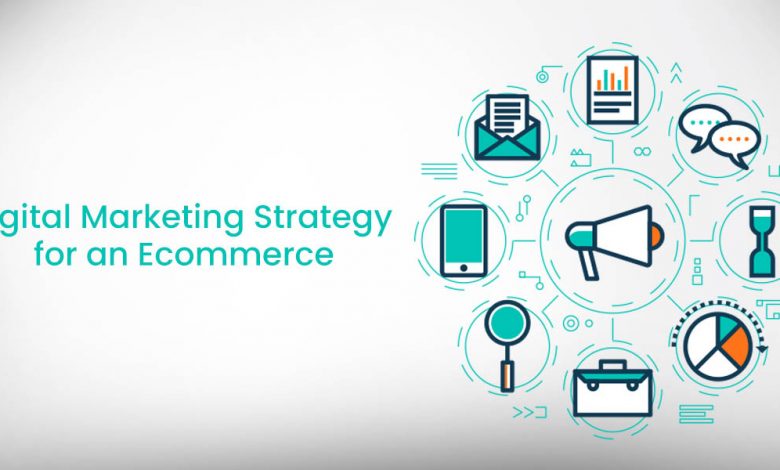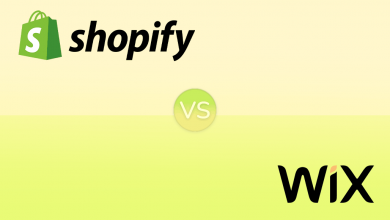Digital Marketing Strategies for E-Commerce

Even though we are living in the digital age, businesses are under immense pressure faced with the fierce competition online. It has become difficult to distinguish different marketing strategies for eCommerce businesses actively in use today. Digital or eCommerce marketing involves several strategies including social media, search engine, email marketing and content marketing.
Digital business websites use all of the mentioned channels to promote their products or services online. However, the question of the right mix, the right budget and the right strategy is what determines the success. The following strategies can guarantee attraction from visitors and aid in facilitating purchases online.
New businesses or those who are struggling with the high competition in the digital industry can opt for affordable social media marketing services. These services can be availed through individual freelancers or even digital marketing firms that offer all kinds of business solutions.
What is Digital Marketing?
The topic of marketing is vast and similarly, digital marketing and advertising is a world of their own. Using the right mix of eCommerce marketing and digital advertising can bring fruitful results for your business. The objective of any marketing strategy is to generate sales and make profits. Fundamentally, all business objectives aim to make money!
However, when we talk about marketing itself, the vision is to bring the customer attention to the brand and ensure that they remember the brand for a long time. Even traditional marketing had the same objective in mind and it always yielded good results. The digital world is no different and requires the same amount of effort, time and money to ultimately generate sales.
Digital marketing outlets are many and you can display your product or service through rich media ads, display ads, and banner ads. Promotion of your product or service is the main takeaway here and that is what digital marketing is all about. Additionally, digital marketing is highly effective to achieve the desired result.
Types of Digital Marketing
Some common marketing channels for digital strategies are mentioned below.
Social Media Marketing
The quickest way of reaching the audience and potential clients is by creating business pages of your brand on several social media platforms. This allows quick engagement and keeping the audience hooked to what your business can offer. Posting content that links the audience with your brand is the fastest way to connect and create brand awareness.
What makes a product memorable on social media? A product that can show off to the audience with strong imagery. Choosing a social media platform will depend on what you are offering. Instagram for example, is perfect for brands that are personal and high-end. Things related to lifestyle, fashion, wellness and fitness are the best fit for Instagram marketing.
On the other hand, Facebook can be used for just about anything! It is a platform with an audience of every age and demographics. Creating shop-able content is another strategy that works well. Displaying ads with products and services tagged with prices can take the customers directly to a shopping cart. Optimizing a seamless shopping experience is an attraction, not all brands offer.
Online businesses thrive on reviews and testimonials. This is true for online shoppers around the world that they will always look at the reviews before placing an order. Every business must start and maintain a positive review ranking to attract confidence from potential customers.
Content Marketing
The statement “content is king” is true in this era. Content includes everything from blogs, to videos and even images. Keywords and Meta descriptions play an important role in determining the search ranking of your brand. The higher your product shows on the search ranking, the better your business is optimized. This allows users to compare your product or service with others and get the necessary information immediately.
The following content marketing strategies are promising for eCommerce businesses.
Optimization of Product Page Copy
Inserting the right keywords on your product’s name, the alt text and the description is what optimization means. Use short and product drives keywords that would bring potential clients directly to your products and increase the chances of sales. Using keywords in image descriptions also brings your product image higher on the Google image search.
Writing Blog Posts
Blog posts do not have to be direct and on-the-face-of-the-reader trying to sell your product. It can be about something related to the product. For example, if your business sells bicycles, write posts about a healthy lifestyle and link your products naturally within the text. Talk about how people can cycle to work instead of driving to stay healthy.
Guest Posts for External Websites
Guest posts are a great way to bring your eCommerce website in front of the right audience. It also increases your domain authority telling search engines that your website is reliable. There is another way of doing this. If there is a relevant blog post on another website, you can extend it by providing an infographic visual or a video that relates to the blog. Your visual content will be linked to your website.
Add Product Related Videos on YouTube
With over a billion active users, YouTube is the second-largest search engine after Google. The chances of your target audience lying there are very high. Post videos related to your product which is also helpful in some way or another. The best way to get more views is again by using keywords that bring users to your channel. This platform can also be used for educating the audience and customers about your product and how to use it.
Including an FAQ Section
An FAQ section may sound like extra work, it actually is great! You should answer questions related to your products in this section. Remember that the FAQ should be induced with keywords related to your product so it further improves the search engine ranking.
Search Engine Marketing
Search engine marketing (SEM) is a mixture of paid advertising and search engine optimization (SEO). While SEO is all about the Google ranking algorithm for optimizing content, SEM involves pay per click campaigns. Furthermore, SEM also includes product-specific ad campaigns and display campaigns. This allows businesses to pay Google for getting the top spot on search results.
A pay per click campaign guarantees that when someone looks up a keyword related to your campaign, your product will show up at the top and the viewer will be redirected to your website. However, every time someone clicks on your product, you will have to pay Google. The payoff of this will be high.
Influencer Marketing
Influencer marketing is the solution for breaking through the barrier of white noise. Instead of following a brand or a paid celebrity, people follow influencers. These influencers have an audience of their own who vouch for products and services. Their word is so strong and trustworthy, that their followers immediately build trust in the brand.
Affiliate Marketing
Affiliate marketing is a commission that other websites and individuals get for selling your products. Ecommerce websites are a good choice for this digital marketing strategy to work. Unlike influencer marketing, affiliate marketing often uses paid advertising and content marketing to drive organic traffic to their website but your product. This marketing tactic works like a team promoting your products or services.
Local Marketing
Often overlooked, but highly effective, local marketing focuses on an audience that is located nearby. This narrows down the geography and ultimately gives you a chance to offer incentives. These incentives may include free shipping and other things. Sometimes, such incentives are enough to gain a customer base.
Ecommerce Marketing Strategies
A successful digital marketing plan for an eCommerce business includes but is not limited to the following:
- Setting industry benchmarks goals – industry benchmarks are based on your industry’s business size and locations. When setting objectives, keep in mind the industry average to know how much you need for business success.
- Breaking down the strategy into smaller tactics – start with focussing on a few key strategies and then judging by the ROI, you can make changes as you go. A good way is to ensure that each strategy gets enough time to work. Doing one thing after another may lead to unsatisfied results and confusion.
- Delighting both old and new customers – converting a visitor into a customer does not end the journey. Make sure you offer after-sale services and continue to offer more by keeping them engaged with your brand. Customer loyalty goes a long way in promoting your brand which can lead to great reviews and even word-of-mouth recommendations.




